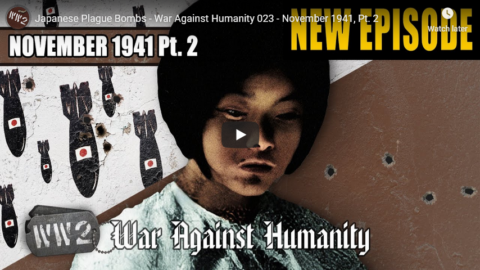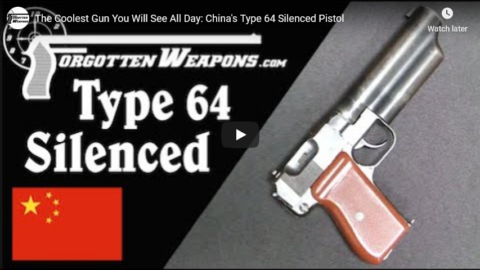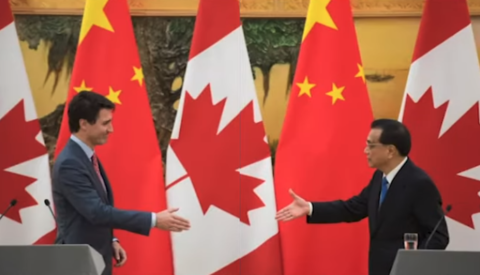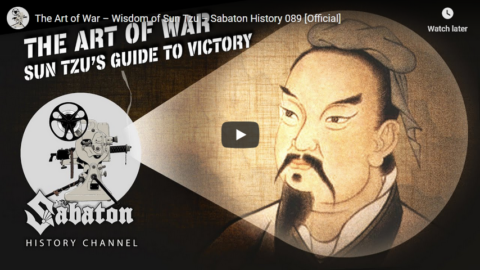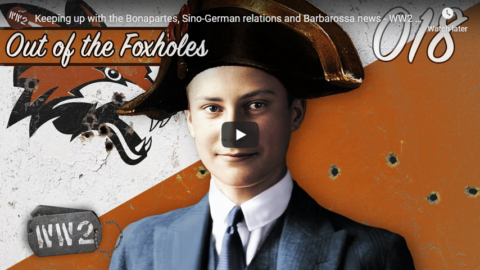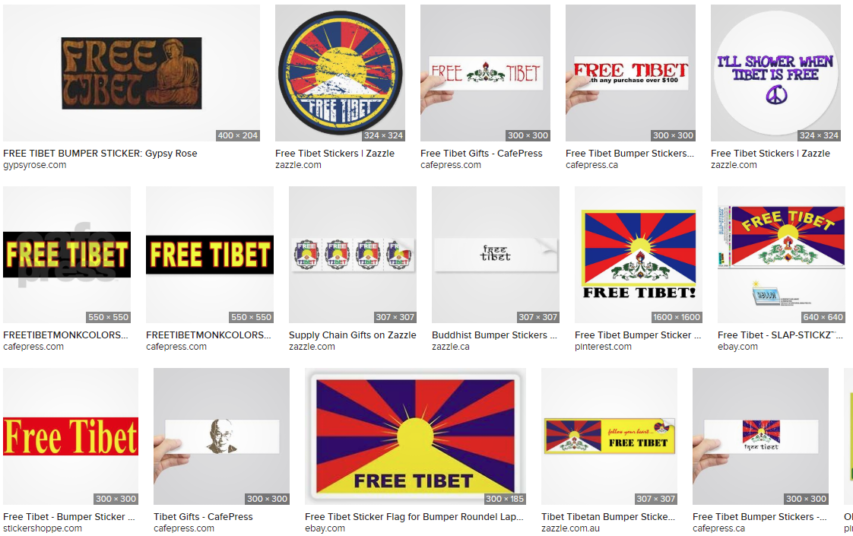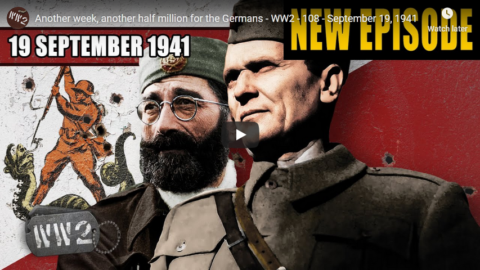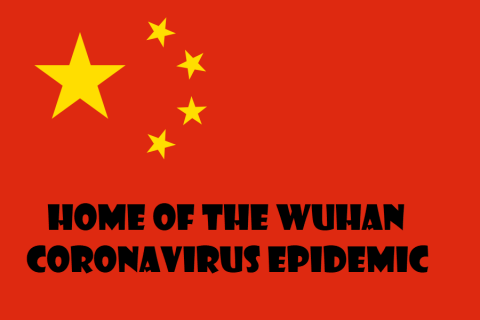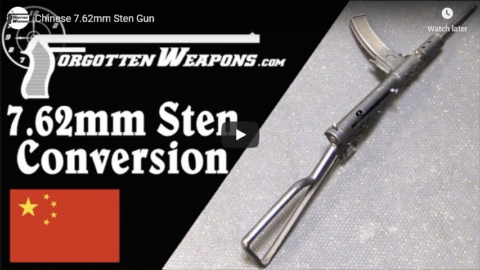Kings and Generals
Published 31 Jan 2019Go to https://www.wix.com/KingsAndGenerals to get started on your website today!
Check out our new website at http://kingsandgenerals.orgSilk production was one of the biggest secrets of China and one of the most lucrative industries of the age. So it is not a surprise that the Roman emperor Justinian was eager to learn this secret. In this video we will discuss the start of the silk production, its importance and the story of how Justinian managed one of the first industrial thefts in history
Support us on Patreon: http://www.patreon.com/KingsandGenerals or Paypal: http://paypal.me/kingsandgenerals
Check out our Merch Store: teespring.com/stores/kingsandgenerals
We are grateful to our patrons and youtube members, who made this video possible: https://drive.google.com/open?id=1Xa-…
The video was made by our friend Cogito
This video was narrated by Officially Devin (https://www.youtube.com/user/Official…)
✔ Merch store ► teespring.com/stores/kingsandgenerals
✔ Podcast ► Google Play: http://bit.ly/2QDF7y0 iTunes: https://apple.co/2QTuMNG
✔ Twitter ► https://twitter.com/KingsGenerals
✔ Instagram ► http://www.instagram.com/Kings_GeneralsProduction Music courtesy of Epidemic Sound: http://www.epidemicsound.com
#Documentary #Justinian #Silk
December 13, 2020
How the Romans Stole Silk Production Secrets from China
November 27, 2020
Japanese Plague Bombs – War Against Humanity 023 – November 1941, Pt. 2
World War Two
Published 26 Nov 2020Japanse deploys biological weapons in China, leading to un unspecified number of deaths. Meanwhile, European Jews from Germany and their occupied territories are deported to Eastern Europe, where Jews are already being killed by the thousands.
Join us on Patreon: https://www.patreon.com/TimeGhostHistory
Or join The TimeGhost Army directly at: https://timeghost.tvFollow WW2 day by day on Instagram @ww2_day_by_day – https://www.instagram.com/ww2_day_by_day
Between 2 Wars: https://www.youtube.com/playlist?list…
Source list: http://bit.ly/WW2sourcesHosted by: Spartacus Olsson
Written by: Joram Appel and Spartacus Olsson
Director: Astrid Deinhard
Producers: Astrid Deinhard and Spartacus Olsson
Executive Producers: Astrid Deinhard, Indy Neidell, Spartacus Olsson, Bodo Rittenauer
Creative Producer: Maria Kyhle
Post-Production Director: Wieke Kapteijns
Research by: Joram Appel and Spartacus Olsson
Edited by: Miki Cackowski
Sound design: Marek Kamiński
Map animations: Eastory (https://www.youtube.com/c/eastory)Colorizations by:
Mikołaj Uchman
Spartacus Olsson
Jaris Almazani (Artistic Man), https://instagram.com/artistic.man?ig…Sources:
Bundesarchiv
Visuotinė-lietuvių-enciklopedija
Yad Vashem 2725/5, 4613/360, 85DO1, 142BO7, 4613/1055, 4147/32, 8747/3, 4360/99, 4613/525, 4572/3, 4572/2, 4572/4
USHMM
Picture of Jezdimir Dangic, courtesy of pogledi.rs
from the Noun Project: Skull by Muhamad UlumSoundtracks from the Epidemic Sound:
Farrell Wooten – “Blunt Object”
Yi Nantiro – “A Single Grain Of Rice”
Philip Ayers – “Trapped in a Maze”
Gavin Luke – “Drifting Emotions 3”
Gunnar Johnsen – “Not Safe Yet”
Cobby Costa – “From the Past”Archive by Screenocean/Reuters https://www.screenocean.com.
A TimeGhost chronological documentary produced by OnLion Entertainment GmbH.
From the comments:
World War Two
3 hours ago
We often get the question how we cope with researching, editing and hosting a series which is almost exclusively about human suffering. Indeed, for every episode that we make, Miki, Spartacus and I spend hours researching, reading accounts and scrolling through gruesome pictures. It is hard or stressful at times, and of course it impacts us emotionally.There’s a couple of things that help us get through this. The purpose with which we’re doing this, which is to learn, share and contribute to awareness so that this may never be forgotten definitely adds to our resilience. We have set up a small-scale support system between us, and we try to talk and share our emotions whenever we need to.
We recognise that some of you watching this may deal with similar questions. Talking about it, wether digitally or in person, helps us understand and process. We believe that exploring the motivations and fears of perpetrators and victims also helps to stay in touch with the human dimension behind staggering statistics. We try our best to keep this series down to earth with a close eye on the humane aspect – both in content and our community.
Thank you all for your support and kind comments,
Cheers,
Joram
November 25, 2020
The Coolest Gun You Will See All Day: China’s Type 64 Silenced Pistol
Forgotten Weapons
Published 14 Aug 2020http://www.patreon.com/ForgottenWeapons
https://www.floatplane.com/channel/Fo…
Cool Forgotten Weapons merch! http://shop.bbtv.com/collections/forg…
The Type 64 is a dedicated suppressed pistol first introduced in 1965 and used in the Vietnam War. It uses a rimless version of the .32 ACP cartridge (7.65x17mm) in a 9-round Makarov-like magazine. Despite outward similarity to the Makarov (especially the grip), the design is wholly unique internally. It uses basically a miniaturized AK bolt to allow the shooter to select between blowback semiauto functioning and single shot manual operation. The bolt’s rotating locking lugs prevent it from cycling when locked, in a very clever alternative use of the rotating bolt system. The suppressor has two chambers, using a combination of baffles and wire mesh as suppressor elements. In addition to standard ammunition, a plastic-sabot frangible load was also developed for use in situations like airline hijackings, and this loading is why some sources reference a maximum effective range of 15 meters.
For all its technical cleverness, the Type 64 is a rather heavy pistol, at 1.8kg / 4 pounds. It was replaced in 1967 by the substantially lighter and simpler Type 67, which weighed only 1.05kg / 2.3 pounds. This particular Type 64 was originally owned by Mitch Werbell III, giving it an even more interesting history …
Contact:
Forgotten Weapons
6281 N. Oracle #36270
Tucson, AZ 85740
October 19, 2020
Sarah Hoyt – “… I’ve been feeling like I’m at the end of a Bond movie, and the villain is telling me his big master plan and how Western Civilization is tied to the train tracks and can’t escape”
In the latest Libertarian Enterprise, Sarah Hoyt explains why she’s not expecting the US federal election next month to resolve anything, at least not in a positive way:
At this point I hold about a 10% chance the Democrats/Socialists/Communists (interchangeable now that the masks are off) don’t fraud their way into full power, pack the court and rip our system apart, to install (yet again) a form of communism. This is complicated by the fact that a lot of them are in China’s pockets. Or rather, China has been filling their pockets for a long while. We might find ourselves working for racist, hegemonic overlords, besides suffering all the ills of a descent into communism. (By the way, they’ve already been doing this to some extent to the less fortunate countries, including most African countries. The left in the US and Europe believes this is benevolence. And that Chinese aren’t racist. I wouldn’t believe it, if it hadn’t been said to me over and over.)
There is maybe another 25% of chance we’ll find ourselves in CW II, now with even more foreign interference. What comes out of that, G-d only knows, and I’m not Him. Which is good, because I have trouble enough being me.
And there is a very strong chance that even if Trump wins the White House, besides continuing to have to drive a car where the wheel is disconnected (the extent of which I wasn’t even fully sure of until this month) he won’t do more than delay the crash.
Sometimes here, and particularly at insty, because I tend to do that really late at night when I’m exhausted and less able to control my moods, you’ll catch a hint of how hopeless I feel our situation to be.
In fact since the lockdown, I’ve been feeling we were screwed. That the lockdown was imposed all over the world on such flimsy evidence, that countries and churches, and every cultural institution not only submitted to it but kept telling the people how much it was needed sent me into a deep depression from which I haven’t fully recovered. (Again, the evidence that this virus was MAYBE as bad as the flu has been before our eyes since the beginning. You don’t need special equipment to see it. The homeless were congregating and not dying in droves. The people in slums in the third world weren’t dying at a higher rate than usual. And there were the numbers from the Diamond Princess. Which some idiot here tried to justify with “but they got the best treatment.” In a floating petri dish. With no special equipment. May G-d have mercy on the soul of every idiot who bought that bullshit.).
This last week, on the other hand, I’ve been feeling like I’m at the end of a Bond movie, and the villain is telling me his big master plan and how Western Civilization is tied to the train tracks and can’t escape.
Oh, not the massive corruption of the Biden crime family. I mean seriously. Any of you who didn’t know already that Crackhead McStripperbang wasn’t being paid for foreign countries for his services must have been living under a rock.
Not even the ridiculous, immediate coordination with which our tech overlords moved to clamp down on that information and preventing it from reaching the virgin ears of most of our willfully and willingly ignorant countrymen.
No, what discouraged me most was the “sexual preference” suddenly becoming a slur and Webster dictionary falling in line. (Seriously, guys, sexual preference goes way beyond orientation. For instance, my sexual preference is monogamous and with someone I love. If you think that there’s no preference involved, you must think people have absolutely no control over their impulses.) Because that bullshit couldn’t happen, even in the most totalitarian of conspiracies.
And that’s the terrifying thought. These people are no more conspiring than your breaklines being cut are a conspiracy not to stop the car.
They are a result of deep inlaid propaganda and misseducation which cause a lot of people to try to fall into line with the “word from above” and be “right” with those they view as the smart people and the masters of society.
October 18, 2020
The diplomatic spat with China is “forcing the prime minister to bring out the biggest guns in his arsenal: his really serious socks”
The Line shows just how seriously Justin Trudeau is taking China’s most recent not-so-veiled threats against Canadians in Hong Kong:
The warm glow of a good feed faded quickly in Ottawa, alas, where our nice little vacation from history continues its unravelling apace. China’s ambassador to Canada is issuing increasingly dire threats to the safety of our citizens, specifically the hundreds of thousands of Canadians living in Hong Kong, forcing the prime minister to bring out the biggest guns in his arsenal: his really serious socks, a very frowny photograph by Adam Scotti, and, we expect, the imminent announcement that on top of all her current duties, Chrystia Freeland will be appointed Progressive Minister In Charge Of Figuring Out What The Hell We Should Do About China But Not In A Way That Offends Anyone The Middle Class Build Back Green Error Error Program Alarm—
Whoa! Sorry! The Freeland Job Generator glitched again. No surprise, considering the miles Trudeau has put on it in only five years. Let’s hope it doesn’t give out entirely — we’d need 47 years to procure another one.
Anyway, as to the matter at hand, your Line editors are pragmatic folk. Canada can’t punch at the same level as China; under Mr. Trudeau, indeed, despite all our for-Liberal-egos-only preening about Canada being back, we can’t even punch at the same level as Ireland and Norway. But it’s time Canadians face facts: we can either continue pretending that China’s increasingly aggressive and threatening behaviour is a problem that will go away if we ignore it long enough, or we can at least pretend that we have balls and take what actions we can. Obviously we’re not going to send a fleet to parade up and down their coast, but there are things we can realistically do, and we aren’t. Australia, for instance, also in Beijing’s sights, has rolled out a series of measures to curtail China’s substantial influence there. Canada ought to be doing the same. And we could start by immediately banning Huawei, and encouraging every other country that would listen — which doesn’t seem to be many — that they should too.
Do we expect the Liberal government to do this? No. Making money shilling for the Chinese regime is the best thing to happen to post-politics Liberals since Ontario’s air ambulance service. But they should do this. And the delay is only gonna make it hurt more when events eventually force us to accept that China is not our friend, never has been, and never will be under the current political leadership.
October 16, 2020
“The Art of War” – Wisdom of Sun Tzu – Sabaton History 089 [Official]
Sabaton History
Published 15 Oct 2020Sun Tzu says: “The Art of War is of vital importance to the state. It is a matter of life and death, a road either to safety or to ruin.” The Chinese Art of War by Sun Tzu is one of the most influential books in history. Throughout the centuries it would accompany generals, statesmen, and philosophers alike. Those who follow his teachings, who safeguard themselves against defeat and make sure of victory before the battle is fought, will triumph. Those who know everything about themselves and their enemies will achieve supreme excellence.
The Art of War by Sun Tzu Text: https://www.gutenberg.org/files/132/1…
Support Sabaton History on Patreon: https://www.patreon.com/sabatonhistory
Listen to “The Art of War” on the album The Art of War:
https://music.sabaton.net/TheArtOfWarWatch the Official Live Clip of “The Art of War” here:
https://www.youtube.com/watch?v=aYoK1…Listen to Sabaton on Spotify: http://smarturl.it/SabatonSpotify
Official Sabaton Merchandise Shop: http://bit.ly/SabatonOfficialShopHosted by: Indy Neidell
Written by: Markus Linke and Indy Neidell
Directed by: Astrid Deinhard and Wieke Kapteijns
Produced by: Pär Sundström, Astrid Deinhard and Spartacus Olsson
Creative Producer: Maria Kyhle
Executive Producers: Pär Sundström, Joakim Brodén, Tomas Sunmo, Indy Neidell, Astrid Deinhard, and Spartacus Olsson
Community Manager: Maria Kyhle
Post-Production Director: Wieke Kapteijns
Editor: Karolina Dołega
Sound Editor: Marek Kaminski
Maps by: Eastory – https://www.youtube.com/c/eastory
Archive: Reuters/Screenocean – https://www.screenocean.comVisual Sources:
– Pictures of Ming Dinasty courtesy of Yprpyqp from Wikimedia
– Pictures from the period of Opium War courtesy of Massachusetts Institute of Technology © 2010 Visualizing Cultures
– Wellcome Images
– Major National Historical and Cultural Site in China
– Pictures of The Art of War book courtesy of vlasta2, bluefootedbooby on flickr.com
– Metmuseum
– Picture of Eastern Han Calvary courtesy of GaryLee Todd from Wikimedia
– Granger Archive
– Hallwyl Museum
– Nomura Art Museum
– The icons from The Noun Project: Man by vanila, Asian woman by Jaime Serra, Wise Man by Éléonore SabatéAll music by: Sabaton
An OnLion Entertainment GmbH and Raging Beaver Publishing AB co-Production.
© Raging Beaver Publishing AB, 2019 – all rights reserved.
October 10, 2020
China’s national memories are oddly inconsistent
At UnHerd, Bill Hayton looks at the one conflict between China and a western nation that bulks disproportionally large in the current Chinese government’s historical grievance-bank:
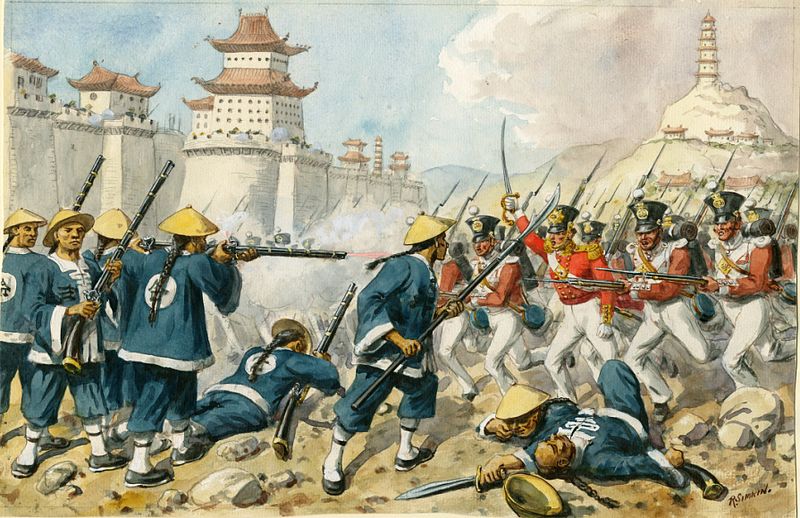
“The 98th Regiment of Foot at the attack on Chin-Kiang-Foo, 21 July 1842.”
Painting by Richard Simkin (1840-1926) via Wikimedia Commons.
Take three mid-19th century Asian conflicts: one killed 20 million people, one killed well over 100,000 and a third killed 20,000. Which one, despite being barely noticed by the Chinese government at the time, is the most discussed today and has become emblematic of an historic clash between East and West?
The immensely deadly Taiping Rebellion between 1850 and 1864 and the vicious conflict between “Hakka” and “Cantonese” peoples between 1855 and 1867 are barely known outside China, despite their far bloodier impacts on human lives. We know vastly more about the “First Opium War” of 1840 because it has played a totemic role in two political arenas: one in China and one in the UK. And in both places, the origins of the war have been obscured and distorted to suit political agendas.
In China, the “Opium War” marks the beginning of what the Communist Party currently calls the “century of national humiliation” — a period of unrelenting misery that only ended in 1949 with the Party’s victory in the Chinese Civil War. It is a narrative that underpins both the Party’s right to rule China and its increasingly assertive foreign policy. In Britain, the narrative of the war has been a weapon wielded variously by Liberal critics of a Whig government, puritan campaigners against drugs, leftist opponents of British foreign policy and Twitter-users claiming that white people are inherently racist. All these critiques and narratives caricature the evidence.
In the comic-book version, the British Empire went to war in 1840 to force an illegal and immoral drug, opium, down the respiratory passages of the Chinese people, purely for its own ill-gotten ends. This narrative is oddly patronising. It assumes that the Chinese side were merely naïve dupes, hapless victims to imperial power. It is time to recognise that there were several protagonists in the First Opium War.
On one side were the British free-traders, men who wanted an end to Chinese restrictions on commerce, whether of cotton or opium. There was also an East India Company anxious to maintain its good relations with local officials, and a London government and its critics with their own agendas. On the other was an imperial court in Beijing split between reformers and a clique of Chinese conservative “scholar-officials” intent on keeping foreign influence at bay. In the middle was an Asian financial problem triggered by a European war.
October 9, 2020
The passing of the “unipolar moment”
In The Dominion Ben Woodfinden considers the return of foreign policy concerns to Canadian politics after a multi-decade disappearance:
The collapse of the Soviet Union ushered in what the late Charles Krauthammer, in a famous Foreign Affairs essay [PDF], called the “unipolar moment” in which the United States became the unquestioned global hegemon, with no true political, economic, or ideological rivals left. We have been living for the last three decades in this moment.
But Krauthammer’s use of “moment” is deliberate. Krauthammer readily admitted that unipolarity was temporary, and that “no doubt, multipolarity will come in time.” Were he alive today, Krauthammer would probably be ready to proclaim the unipolar moment over. Great power rivalry is back, and the COVID-19 pandemic has accelerated this, killing off any hopes that the relationship between an increasingly aggressive China and the United States could be anything other than adversarial.
This rivalry looks set to become the defining feature of the post-COVID international order, and as the Meng Wanzou case and the kidnapping of the two Michaels reveals, Canada finds itself unavoidably caught in the middle of this burgeoning rivalry. Where Canada fits into this is now one of the most important questions facing our country today.
Canada’s relationship with the United States is our most important relationship. We are unavoidably connected to our neighbour, and our relationship with the United States is a largely amiable one. But despite our integration and close ties with America, Canada remains a sovereign nation, and most Canadians retain a desire for Canada to continue to behave and act like one. Similarly, while it is a Canadian pastime to criticize the flaws and failings of our southern neighbour, we still share the same fundamental democratic values. Thus when it comes to figuring out where Canada stands in the middle of this new great power rivalry, we have little choice but to be broadly aligned with the United States and other free democratic nations.
[…]
Canada can accomplish these goals by prioritizing the strengthening of our relationship with other democratic nations that share our values and are also wary of the rise of an aggressive China with global ambitions. There is no shortage of other nations that fit this description. Most obvious are other Commonwealth nations with which we share common values and history. I’ve written before here in defence of CANZUK, a proposed agreement between Canada, Australia, New Zealand, and the United Kingdom that would strengthen economic ties and prioritize foreign policy and military coordination between these four nations. This is a good start, and strengthening the relationship between other Westminster nations to ensure that we all have an independent voice alongside America would be valuable to all prospective CANZUK members. [Federal Conservative leader Erin] O’Toole was an early supporter of CANZUK during his 2017 leadership bid, and this is something we should prioritize.
Another Commonwealth nation that Canada should prioritize the strengthening of economic and political relations with is India, a nation also threatened by an assertive China. While Canada-India relations have soured under the current government, rebuilding this relationship should be a priority. The current Indian government is not without its controversies and diaspora politics in Canada is complicated to put it mildly. But in the face of a confrontational and dangerous Chinese regime, we don’t have much choice other than to pursue closer and warmer relations with India, even if this will displease some.
October 8, 2020
October 4, 2020
September 28, 2020
It’s been a while since these stickers occupied pride of place on every Prius bumper, hasn’t it?
Arthur Chrenkoff wonders “Whatever happened to ‘Free Tibet’?”
With its heyday probably twenty years ago, it used to be a major cause celebre for artists and activists, with bumper stickers adorning countless cars, including – proverbially – the early Priuses. It was mostly a thing of the left (certainly in Australia it was largely associated with the Greens) and the hippies and New Agers enchanted by the wit and wisdom of the Dalai Lama, spruiking his version of Buddhism from exile. This probably scared many people off, which is a pity because the question of Tibetan independence shouldn’t be judged on the merits of its incense burning Western supporters.
So what happened? Tibet is certainly still not free – if anything the things have gotten worse on the rooftop of the world – but the campaign has largely dropped out of the public consciousness. I don’t quite know the answer myself. Maybe some political causes, like fashion trends, have limited life spans. Maybe the left has learned to stop worrying and live with China as one of the few viable alternatives to the “Western neoliberal world order”. Maybe China has become too rich and powerful to hope that candle-lit vigils for Lhasa will do any good.
So what’s been happening in Tibet lately, just out of interest?
September 27, 2020
September 20, 2020
September 18, 2020
Was the Wuhan Coronavirus (aka Covid-19) created in a Chinese lab?
Rowan Jacobsen profiles the scientist who believes, based on her own research, that the Wuhan Coronavirus was not a naturally occurring mutation and was instead deliberately created in a Chinese government lab:
It wasn’t long before she came across an article about the remarkable stability of the virus, whose genome had barely changed from the earliest human cases, despite trillions of replications. This perplexed Chan. Like many emerging infectious diseases, COVID-19 was thought to be zoonotic — it originated in animals, then somehow found its way into people. At the time, the Chinese government and most scientists insisted the jump had happened at Wuhan’s seafood market, but that didn’t make sense to Chan. If the virus had leapt from animals to humans in the market, it should have immediately started evolving to life inside its new human hosts. But it hadn’t.
On a hunch, she decided to look at the literature on the 2003 SARS virus, which had jumped from civets to people. Bingo. A few papers mentioned its rapid evolution in its first months of existence. Chan felt the familiar surge of puzzle endorphins. The new virus really wasn’t behaving like it should. Chan knew that delving further into this puzzle would require some deep genetic analysis, and she knew just the person for the task. She opened Google Chat and fired off a message to Shing Hei Zhan. He was an old friend from her days at the University of British Columbia and, more important, he was a computational god.
“Do you want to partner on a very unusual paper?” she wrote.
Sure, he replied.
One thing Chan noticed about the original SARS was that the virus in the first human cases was subtly different — a few dozen letters of genetic code — from the one in the civets. That meant it had immediately morphed. She asked Zhan to pull up the genomes for the coronaviruses that had been found on surfaces in the Wuhan seafood market. Were they at all different from the earliest documented cases in humans?
Zhan ran the analysis. Nope, they were 100 percent the same. Definitely from humans, not animals. The seafood-market theory, which Chinese health officials and the World Health Organization espoused in the early days of the pandemic, was wrong. Chan’s puzzle detectors pulsed again. “Shing,” she messaged Zhan, “this paper is going to be insane.”
In the coming weeks, as the spring sun chased shadows across her kitchen floor, Chan stood at her counter and pounded out her paper, barely pausing to eat or sleep. It was clear that the first SARS evolved rapidly during its first three months of existence, constantly fine-tuning its ability to infect humans, and settling down only during the later stages of the epidemic. In contrast, the new virus looked a lot more like late-stage SARS. “It’s almost as if we’re missing the early phase,” Chan marveled to Zhan. Or, as she put it in their paper, as if “it was already well adapted for human transmission.”
That was a profoundly provocative line. Chan was implying that the virus was already familiar with human physiology when it had its coming-out party in Wuhan in late 2019. If so, there were three possible explanations.
For the record, my strong suspicion is that she is correct about the origins of the virus, but I don’t think it was deliberately released by the Chinese government. I think if it had been deliberate, it would have been much more directly “weaponized” in both delivery mechanism and targeting.
September 5, 2020
Chinese 7.62mm Sten Gun
Forgotten Weapons
Published 13 May 2020http://www.patreon.com/ForgottenWeapons
https://www.floatplane.com/channel/Fo…
Cool Forgotten Weapons merch! http://shop.bbtv.com/collections/forg…
During World War Two, Canada supplied some 73,000 Sten guns (made by the Long Branch arsenal) to Chinese Nationalist forces in an effort to help them fight the Japanese. These Stens were standard MkII pattern guns, chambered for the 9x19mm Parabellum cartridge. However, many of these were eventually converted to 7.62mm Tokarev ammunition, especially after the victory of the Communist forces over the Nationalists. The conversion involved a new barrel and new magazine and magazine well. The 7.62mm barrels were typically longer than the original ones, and the magazine of choice was that of the PPS-43. Some were done by installed a magazine adapter into the original magazine well, and some (like this one) were done by cutting off the original magazine well and replacing it with a new one. In addition, some Sten guns were made domestically in China, both in 9mm and 7.62mm. The 7.62mm Tokarev cartridge was popular both from Russian pistols and submachine guns and also from China’s long military use of the dimensionally-identical 7.63mm Mauser cartridge in C96 pistols.
Many thanks to the Royal Armouries for allowing me to film and disassemble this interesting submachine gun! The NFC collection there — perhaps the best military small arms collection in Western Europe — is available by appointment to researchers:
https://royalarmouries.org/research/n…
You can browse the various Armouries collections online here:
https://royalarmouries.org/collection/
Contact:
Forgotten Weapons
6281 N. Oracle #36270
Tucson, AZ 85740


